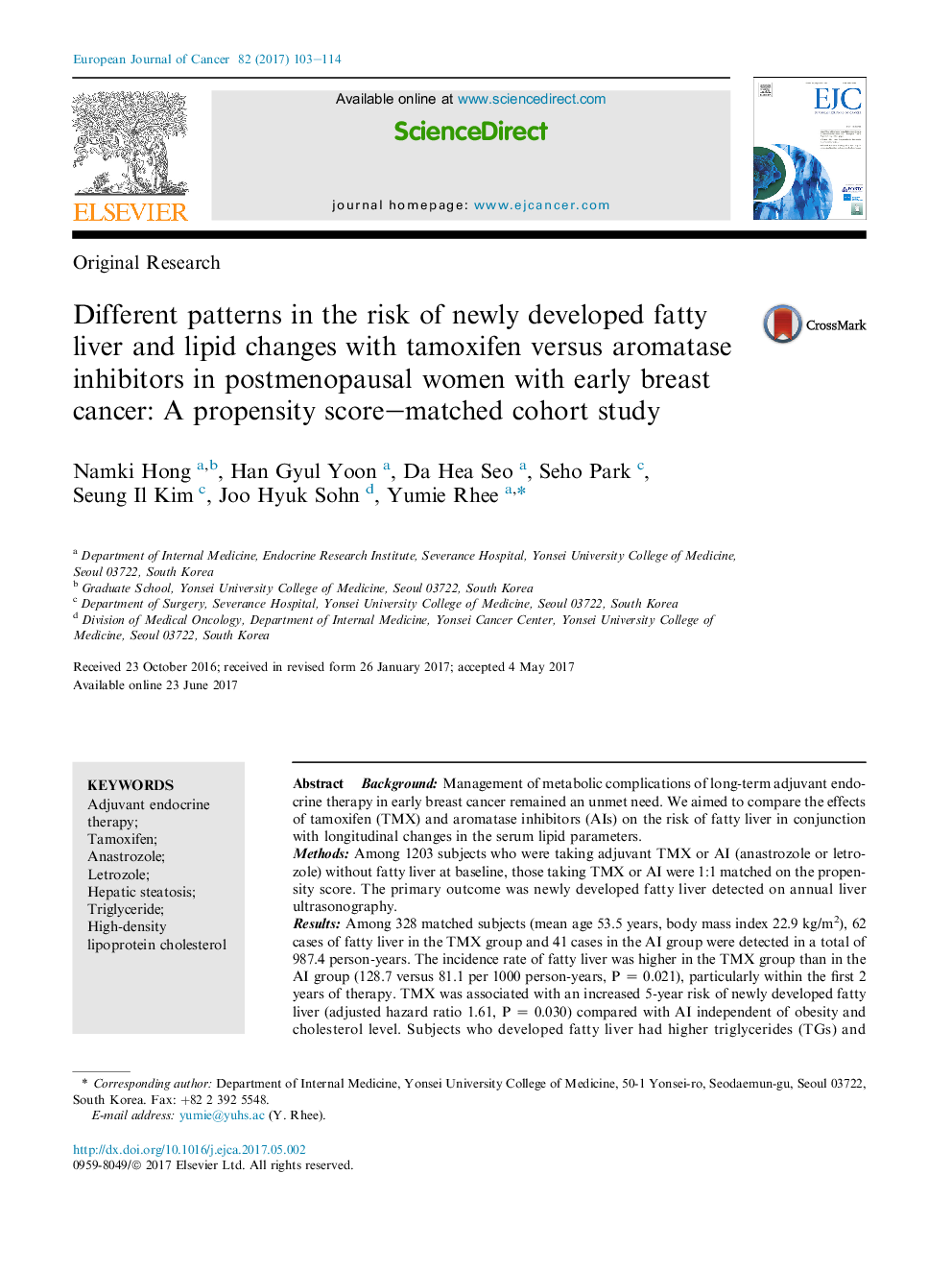| کد مقاله | کد نشریه | سال انتشار | مقاله انگلیسی | نسخه تمام متن |
|---|---|---|---|---|
| 5526422 | 1547050 | 2017 | 12 صفحه PDF | دانلود رایگان |
- Tamoxifen (TMX) use increased the risk of newly developed fatty liver compared to aromatase inhibitors (AIs).
- TMX was related to more severe fatty liver with elevated liver enzyme than AIs.
- The effect of TMX on fatty liver was independent of obesity and insulin resistance.
- High baseline body mass index, triglycerides and low high-density lipoprotein cholesterol were risk factors for incident fatty liver.
BackgroundManagement of metabolic complications of long-term adjuvant endocrine therapy in early breast cancer remained an unmet need. We aimed to compare the effects of tamoxifen (TMX) and aromatase inhibitors (AIs) on the risk of fatty liver in conjunction with longitudinal changes in the serum lipid parameters.MethodsAmong 1203 subjects who were taking adjuvant TMX or AI (anastrozole or letrozole) without fatty liver at baseline, those taking TMX or AI were 1:1 matched on the propensity score. The primary outcome was newly developed fatty liver detected on annual liver ultrasonography.ResultsAmong 328 matched subjects (mean age 53.5 years, body mass index 22.9 kg/m2), 62 cases of fatty liver in the TMX group and 41 cases in the AI group were detected in a total of 987.4 person-years. The incidence rate of fatty liver was higher in the TMX group than in the AI group (128.7 versus 81.1 per 1000 person-years, P = 0.021), particularly within the first 2 years of therapy. TMX was associated with an increased 5-year risk of newly developed fatty liver (adjusted hazard ratio 1.61, P = 0.030) compared with AI independent of obesity and cholesterol level. Subjects who developed fatty liver had higher triglycerides (TGs) and lower high-density lipoprotein cholesterol (HDL-C) level at baseline than those without, which was sustained during follow-up despite the serum cholesterol-lowering effect of TMX.ConclusionsTMX independently increased the 5-year risk of newly developed fatty liver compared with AI in postmenopausal women with early breast cancer. Our findings suggest the need for considering the risk of fatty liver as a different adverse event profile between AI and TMX, particularly in patients with obesity, high TGs and low HDL-C.
Journal: European Journal of Cancer - Volume 82, September 2017, Pages 103-114
